Queen Juliana of the Netherlands
Queen Juliana was Queen of the Netherlands for more than three decades in the second half of the 20th Century. She was born on April 30, 1909, at Noordeinde Palace, in The Hague. Her mother was the reigning monarch, Queen Wilhelmina, and her father was Duke Henry of Mecklenburg-Schwerin. 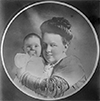
Juliana grew up at court and received a royal education, learning with other royal children of her own age, first at a small school at Huis ten Bosch Palace and then from private tutors. She turned 18 in 1927 and that year enrolled at the University of Leiden; she graduated three years later with a bachelor's degree in international law. 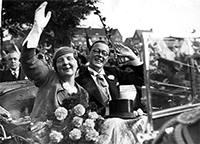
Juliana met her eventual husband, Prince Bernhard of Lippe-Biesterfeld, at the 1936 Winter Olympic Games, in Bavaria. They were distant cousins, and her mother arranged the marriage, but Juliana found that she loved him anyway. They were married on Jan. 7, 1937, in The Hague. One year later, their daughter Beatrix was born, ensuring the royal succession. Another daughter, Irene, followed, in 1939. 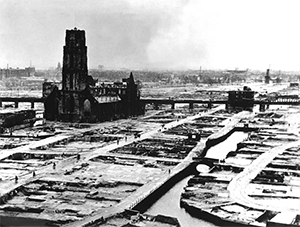
Germany had respected Wilhelmina's wish for neutrality during World War I but did no such thing in World War II, invading the Netherlands on May 10, 1940. Germany deploying an overwhelming arsenal of men and weapons against a Dutch defense force that would have been inadequate during the First World War. Some 800 aircraft and 700 tanks bombed and rolled their way through the meager Dutch defenses; the German invasion also featured a mass drop of paratroopers. The German air force, the Luftwaffe, devastated Rotterdam, reducing the proud city to rubble, and then promised to do the same thing to Amsterdam and other Dutch cities. The royal family left the country not long before the country's armed forces surrendered, five days later. (The province of Zeeland alone continued to resist, finally succumbing on May 17.) The queen sailed to the United Kingdom and presided over a government in exile. She regularly communicated with her people using Radio Orange, which was outlawed by the occupying army. Juliana and her husband preceded the queen by a day. Juliana remained in the U.K. for a month, then went to Canada, taking her children with her. Her husband stayed with the queen to run the government in exile. Juliana went to Ottawa, Canada's capital, and lived there for a time. Both the queen and Prince Bernhard traveled back and forth across the Atlantic from time to time during the first years of the war. Juliana's third child, Princess Margriet, was born on Jan. 19, 1943, in Ottawa. The liberation of the Netherlands came, after several attempts, in 1945. Wilhelmina, Juliana, and Bernhard then returned. The people of Canada had embraced Juliana and the Dutch cause; Juliana showed her appreciation by sending the people of Ottawa 100,000 tulip bulbs. She continued to send an annual gift of tulips to Canada, and the existing Canadian Tulip Festival honors this commitment. 
Juliana traveled around the country, working actively as the President of the Dutch Red Cross and helping support the slow rebuilding of a country devastated by the war. A keen cyclist, she traveled many places by bicycle. Juliana gave her birth to another daughter, Christina, in 1947. Juliana was seriously ill during the pregnancy, and the child was born with cataracts that left her with very limited sight. In that same year, Juliana assumed monarchical duties for a few months when her mother's health was severely compromised. Wilhelmina recovered briefly but then fell ill again, finally abdicating her throne on May 4, 1948. Juliana became queen. The queen faced a serious challenge to her leadership in the first few months of her reign. Indonesia, long a Dutch colony, declared its independence. Juliana and her government reluctantly agreed to recognize that independence in 1949. In the same way, five years later, Suriname and the Netherlands Antilles broke free from the colonial yoke and became their own entities, within the Dutch Kingdom. 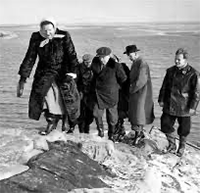
In 1953, the North Sea Flood, the worst in centuries, had devastated the Netherlands, killing nearly 2,000 people and endangering tens of thousands of others. Juliana, wearing boots and an old coat, pitched in with the relief efforts, carrying food and water to starving and thirsty people. This furthered the queen's popularity. Also in the 1950s, the Netherlands, despite the devastation of the war and the flood, enjoyed a strong economic recovery and embraced European alliances, joining the Benelux customs union, the European Economic Community, and the North Atlantic Treaty Organization. Beatrix married in 1965, to Claus von Amsberg, a German diplomat who had fought in the German Army during World War II. His heritage caused great controversy within the Netherlands. Juliana briefly considered disallowing the marriage but acquiesced. Two years later, when Beatrix gave birth to a son, Willem-Alexander, the demonstrations in the streets were overwhelmingly in support of the princess. 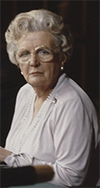
The 1970s were particularly trying for Juliana and the Dutch government. Their refusal to recognize the declaration of independence of the South Moluku led to a handful of hostage crises and a number of deaths. Also, in 1975, Suriname seceded from the Dutch Kingdom. Her husband was also found to have accepted a large amount of influence money from an American aircraft company, in return for contracts with the Dutch Air Force. Through all of this, Juliana maintained her popularity with her people. Juliana had celebrated her Silver Jubilee in 1973. Seven years later, on her 71st birthday, she abdicated her throne, giving way to Beatrix. Juliana's health declined in the next several years, and she did not appear in public. She died on March 20, 2004, at Soestdijk Palace in Baarn. She was 94. |
|
Social Studies for Kids
copyright 2002–2025
David White




